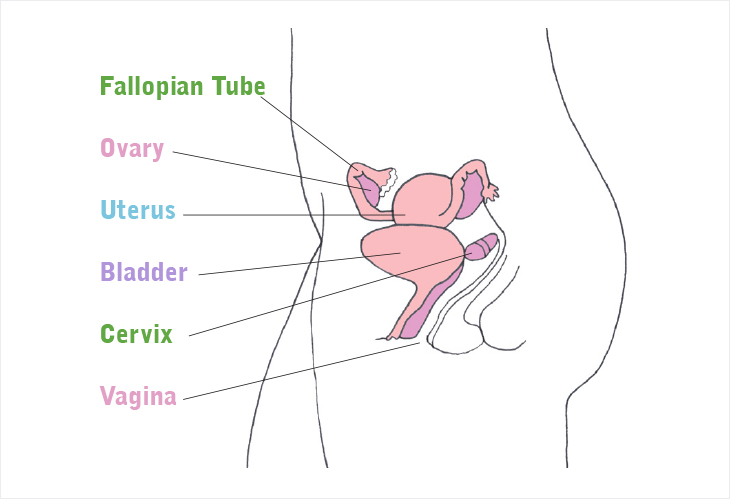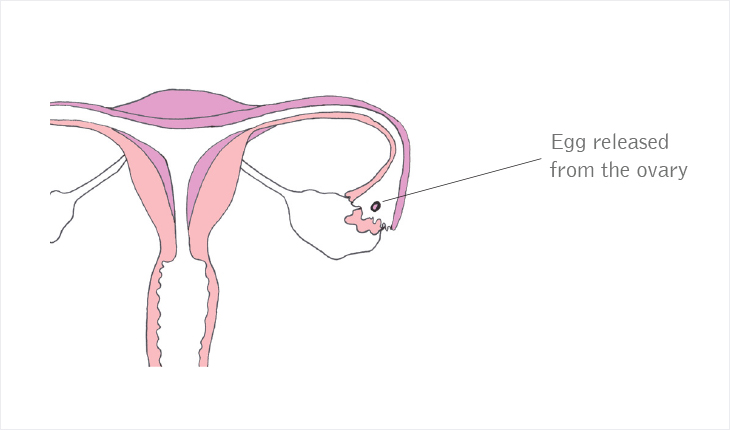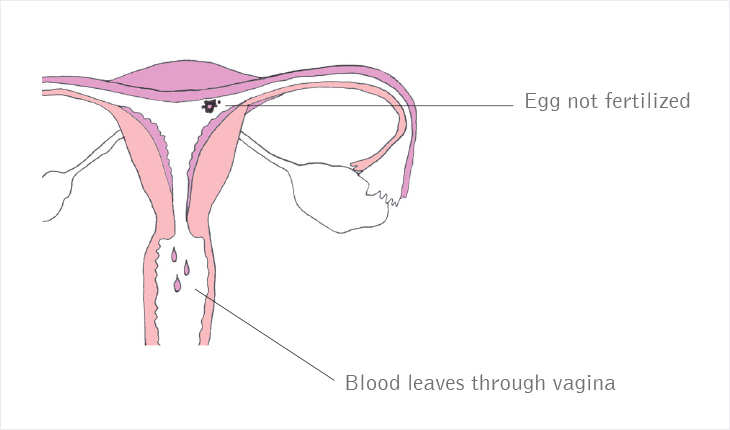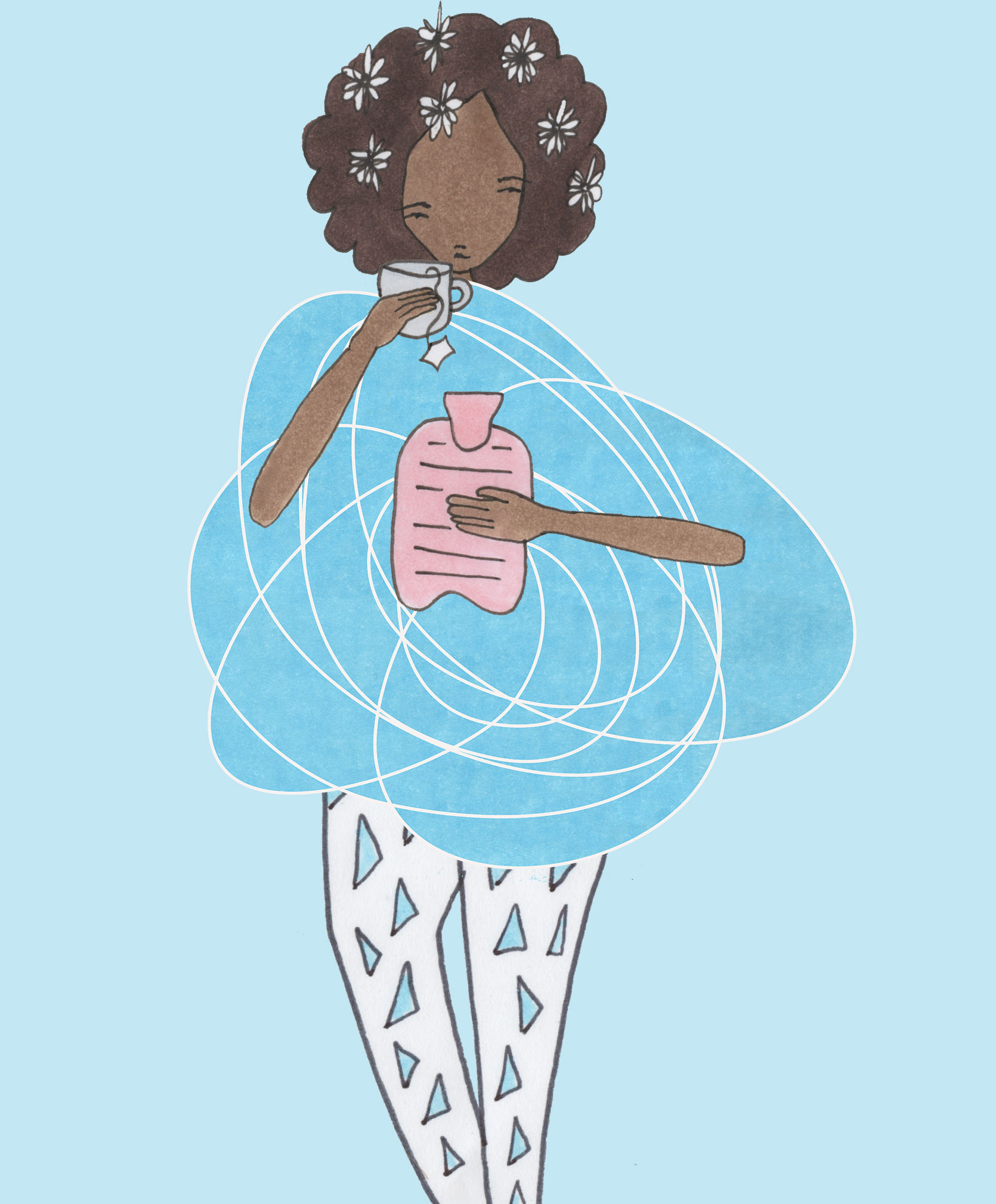All About Periods.
All About Periods.
The series of changes that happens to your body in the lead up to your period is known as the ‘menstrual cycle’. It’s through this cycle that human reproduction is made possible.
The diagram to the right shows a basic breakdown of the female anatomy. It’s very important to become familiar with your body!

This is how it works:
Stage 1: During ovulation an egg is released from the ovaries and travels through the fallopian tubes towards the uterus.

Stage 2: In preparation for fertilization, the lining of the uterus increases in thickness and fills with blood.

Stage 3: If the egg is not fertilized and pregnancy doesn’t occur, this lining breaks down and leaves the body. This is when you start bleeding and it’s the bleeding that’s called menstruation and it usually lasts between 2 to 7 days.

Stage 4: The lining of the uterus then prepares itself for the next cycle.
Around the time your period is due, hormones are raging through the body. You may experience fairly dramatic mood swings as well as physical aches and pains. If you do, you are experiencing something called per-menstrual syndrome (PMS). PMS is extremely common, and can occur up to 10 days before your period is due.
Symptoms can range in degrees of severity, with most women experiencing mild symptoms. However, some of us experience more severe pain and it’s essential to seek the advice of your GP to help ease symptoms.
Symptoms can include:
- Tiredness
- Mood swings
- Headaches
- Cravings
- Weight gain and/or fluid retention
- Cravings
- Cramps
- Depression
- Acne
- Tender breasts
- Constipation
- Dizziness
- Backaches

Toxic Shock Syndrome or TSS, is a rare but serious condition that has been linked to the use of tampons. TSS is caused from toxins produced by the ‘staphylococcus aureaus’ bacteria, more commonly known as ‘golden staph’.
This bacterium is mostly found on the skin, in the nose and in the vagina, and is mostly associated with young women using tampons.
While tampons don’t actually cause TSS, they can provide the perfect environment for the bacteria to produce more toxins than normal, and therefore increasing your risk of TSS.
Even though the likelihood of contracting TSS is extremely slim, symptoms can appear rapidly. Below are signs to look out for:
1. Fever of 38.9 degrees or higher.
2. Dizziness and feeling faint.
3. Vomiting and diarrhea.
4. Rashes on either hands and feet (same appearance as sunburn)
If you begin to feel any of these symptoms, immediately remove your tampon and please seek medical advice. If you would like more information regarding TSS, contact your local GP or community health center.

We want you to be as well informed as possible and to understand the possible dangers associated with TSS. Here are some precautionary steps you should take:
1. Change your tampon at least 4 times a day, or every 3 to 4 hours.
2. Use the lowest absorbency tampon that you need. Using a lower absorbency will encourage you to change more frequently which is key.
3. As a general rule never leave a tampon in for longer than 8 hours, or overnight. Change to pads for night time use.
4. Maintain your hygiene, wash your hands before, and after inserting a tampon.
5. Finally, and most importantly, keep yourself clean with daily showers or baths. Make sure you use clean towels as well as clean, breathable underwear, such as cotton underwear.


